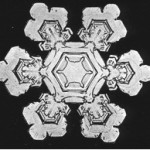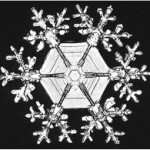Introduction
Both traditional creationists and intelligent design scholars have invoked probability arguments in criticisms of biological evolution. They argue that certain features of biology are so fantastically improbable that they could never have been produced by a purely natural, “random” process, even assuming the billions of years of history asserted by geologists and astronomers. They often equate the hypothesis of evolution to the absurd suggestion that monkeys randomly typing at a typewriter could compose a selection from the works of Shakepeare.
One creationist-intelligent design argument goes like this: the human alpha-globin molecule, a component of hemoglobin that performs a key oxygen transfer function, is a protein chain based on a sequence of 141 amino acids. There are 20 different amino acids common in living systems, so the number of potential chains of length 141 is 20141, which is roughly 10183 (i.e., a one followed by 183 zeroes). These writers argue that this figure is so enormous that even after billions of years of random molecular trials, involving all the biochemical material on the ancient earth’s surface, no human alpha-globin protein molecule would ever appear, and thus the hypothesis that human alpha-globin arose by an evolutionary process is decisively refuted [Foster1991, pg. 79-83; Hoyle1981, pg. 1-20; Lennox2009, pg. 163-173].
Fallacies in the creationist probability arguments
One fallacy in this particular argument, common to many others of this genre, is that it ignores the fact that a large class of alpha-globin molecules can perform the essential oxygen transfer function, so that the computation of the probability of a single instance is misleadingly remote. Indeed, most of the 141 amino acids in alpha-globin can be changed without altering the key oxygen transfer function, as can be seen by noting the great variety in alpha-globin molecules across the animal kingdom (see DNA). When one revises the calculation above, based on only 25 locations essential for the oxygen transport function (which is a generous over-estimate), one obtains 1033 fundamentally different chains, a huge figure but vastly smaller than 10183, and small enough to neutralize the probability-based argument against evolution [Bailey2000].
But even after this revision, the calculation still suffers from the fatal fallacy of presuming that a structure such as human alpha-globin arose by a single all-at-once random trial event (which, after all, is the creationist theory, not the scientific theory, of its origin). Instead, available evidence from hundreds of published studies on the topic suggests that alpha-globin and other proteins arose as the end product of a long sequence of intermediate steps, each of which was biologically useful in an earlier context [Hardison2001]. Thus any simplistic probability calculation (whether it is arguing for or against some aspect of evolution) that does not take into account the step-by-step process by which the structure came to be is not meaningful and can easily mislead [Bailey2000; Musgrave1998].
What’s more, such calculations completely ignore the atomic-level biochemical processes involved, which often exhibit strong affinities for certain types of highly ordered structures. For example, self-catalyzing biomolecules such as RNA are being investigated in research into the origin of life — see Origin. Also, molecular self-assembly occurs in DNA molecule duplication every time a cell divides. If we were to compute the chances of the formation of a human DNA molecule during meiosis, using a simple-minded probability calculation similar to that mentioned above, the result would be something on the order of one in 101,000,000,000, which is far, far beyond the possibility of completely “random” assemblage. Yet this process occurs millions of times every day in the human body.
Those familiar with probability theory will recognize that one central difficulty with these creationist arguments stems from the fact that in any probability calculation, one must first very carefully define the ensemble space. As noted above, it makes no sense to consider, as an ensemble, all possible random assemblages of atoms into a protein chain, since that is not the scientific hypothesis of how alpha-globin and other biomolecular structures came to be. Instead, the only valid ensemble for this analysis is the set of all possible outcomes of an eons-long string of biomolecular processes, encompassing proteins, organisms, species and environments. But at present we have no possible way of even enumerating such an ensemble, much less determining the probability of any particular scenario or class of scenarios in this ensemble. Perhaps at some time in the far distant future, a super-powerful computer could simulate with convincing fidelity the multi-billion-year biological history of the earth, in the same way that scientists today attempt to simulate (in a much more modest scope) the earth’s climate. Then, after thousands of such simulations have been performed, we might obtain some meaningful statistics on the chances involved in the formation of some class of biological structures such as alpha-globin. Until that time, all such probability calculations are essentially meaningless.
Along this line, it is also important to keep in mind that the process of natural biological evolution is not really a “random” process. Yes, mutations are “random” events, but the all-important process of natural selection, acting under the pressure of an extremely competitive landscape involving thousands of other species as well as numerous complicated environmental pressures, is anything but random. This strongly directional nature of natural selection, which is the essence of evolution, by itself invalidates simple-minded probability calculations.
Snowflakes
Some of the difficulties with creationist probability arguments can be illustrated by considering snowflakes. Bentley and Humphrey’s book Snow Crystals includes over 2000 high-resolution black-and-white photos of real snowflakes, each with intricate yet highly regular patterns that are almost perfectly six-way symmetric [Bentley1962]. A good online source with numerous high-resolution photographs has been compiled by Kenneth Libbrecht [Libbrecht2012]. Three photos from the Bentley-Hymphrey collection are shown below. By employing a reckoning based on six-way symmetry, one can calculate the chances that one of these structures can form “at random” as roughly one part in 102500. This probability figure is even more extreme (far more extreme, in fact) than those that have appeared in the creationist-intelligent design literature. So is this proof that each individual snowflake has been designed by a supernatural intelligent entity? Obviously not.
The fallacy here, once again, is presuming an all-at-once random assembly of molecules. Instead, snowflakes, like biological organisms, are formed as the product of a long series of steps acting under well-known physical laws, and the outcomes of such processes very sensitively depend on the starting conditions and numerous environmental parameters. It is thus folly to presume that one can correctly reckon the chances of a given outcome by means of superficial probability calculations [Bailey2000].
Virus/E. coli experiment
A recently announced experimental result underscores the futility in attempting to argue against evolution on the basis of probability calculations. In January 2012, a research team led by Richard Lenski at Michigan State University demonstrated how colonies of viruses were able to evolve a new trait in as little as 15 days. The researchers studied a virus, known as “lambda,” which infects only the bacterium E. coli. They engineered a strain of E. coli that had almost none of the molecules that this virus normally attaches to, then released them into the virus colony. In 24 of 96 separate experimental lines, the viruses evolved a strain that enabled them able to attach to E. coli, using a new molecule (a channel in E. coli known as “OmpF”) that they had never before been observed to utilize. All of the successful runs utilized essentially the same set of four mutations. Justin Meyer, a member of the research team, estimated that the chance of all four mutations arising “at random” is roughly one in 1027 (one thousand trillion trillion). Yet these lambda viruses acquired all four mutations in a matter of weeks [Zimmer2012].
Dembski’s information theory arguments
Intelligent design writer William Dembski invokes both probability and information theory (the mathematical theory of information content in data) in his arguments against Darwinism [e.g., Dembski2002]. However, mathematicians who have examined Dembski’s works have identified major flaws his reasoning [Elsberry2011]. For a detailed discussion of Dembski’s theories, see Information theory.
Conclusions
In short, the many arguments against evolution based on probability or information theory that have been published in the creationist-intelligent design literature exhibit serious fallacies:
- They presume that the biomolecular structure came into existence through a single chance assemblage of atoms, rather than as the result of a long series of intermediate steps, each useful in a previous biological context.
- They ignore numerous well-known physical laws and processes at the atomic level, by which remarkably rich structures can form naturally, not by chance.
- They apply faulty mathematical reasoning, such as by ignoring the fact that a very wide range of molecular structures could perform a similar function.
- They ignore the fact that biological evolution is not a “random” process — mutations may be random, but natural selection is far from random.
- They attempt to invoke advanced mathematical concepts (e.g., information theory), but derive highly questionable results and misapply these results in ways that render the conclusions invalid in an evolutionary biology context.
Perhaps such failings are to be expected, since the field of probability is notorious for fallacies, and sometimes even persons with impressive-sounding credentials can fool themselves in this arena [Saini2009].
In any event, it is clear that it is extremely unwise to base one’s religious faith on probability arguments. Why look to probability to “prove” God, particularly when there are very serious questions as to whether such reasoning is valid? One is reminded of a passage in the New Testament (1 Cor. 14:8): “For if the trumpet gives an uncertain sound, who shall prepare himself for the battle?”
This post also appeared at SMR blog.


